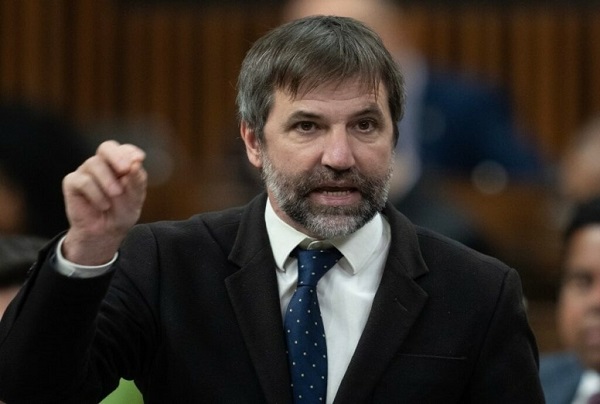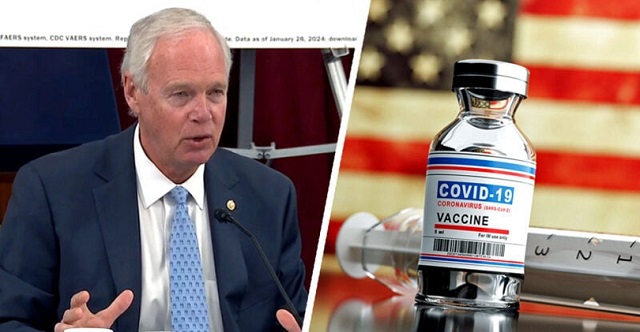Economy
The Cost to Western Canada if Steven Guilbeault Copies Biden’s Assault on LNG

From EnergyNow.ca
By Jim Warren
” if all of the gas exported by Canada to the US from 2014 to 2021, the years encompassing the price depression, had instead been exported to Europe at average European prices, Canadian natural gas revenues would have been US $100.7 billion higher “
What would it cost western Canada’s natural gas producers if the federal government does to them what it did to tidewater export opportunities for petroleum?
This question became topical last week when the Biden Democrats announced they would block construction of new LNG export facilities in the US. It makes sense to get a handle on the size of revenues at stake if future development of LNG export capacity in Canada is similarly at risk. Indeed, it seems quite reasonable to worry that Steven Guilbeault will take inspiration from the Biden decision and try to do something similarly silly in Canada.
Getting pipelines to tidewater is something Canada’s petroleum industry has been counting on to improve export revenues. This was a particularly urgent hope during the eight-year oil price depression that lasted from Fall 2014 until early Winter 2022. It was, and still is, assumed exporting Canadian diluted bitumen (dilbit) into new non-US markets will allow producers to avoid the costly differential charges assessed by American buyers and refiners.
What if scenarios floated during the eight-year price slump showed that had the Northern Gateway and Trans Mountain pipelines been completed, Canadian producers could have earned billions in additional revenues. Estimates of lost revenues ranged from a Fraser Institute estimate of $15.8 billion for 2018 alone to my own low-ball estimate for losses of $7 billion to $9 billion for that same year. Numerous back of the napkin “what if” calculations for lost revenues produced in coffee shops across the prairies helped fuel frustration and anger at federal government environmental policies intended to limit global warming by cancelling pipelines.
Fast forward to 2024 and we can see that similar conditions apply to western Canada’s natural gas sector. The US is virtually the sole export market for Canadian natural gas. Looking back at the period from 2010-2019 we find that the prices paid by US importers for Canadian natural gas were less than half what Europeans were paying. The price spread became exponentially wider beginning in 2016. It peaked in 2022 when the European price was six times higher than the US price. The European gas price will be five times higher than US prices for 2024.
All else being equal, if all of the gas exported by Canada to the US from 2014 to 2021, the years encompassing the price depression, had instead been exported to Europe at average European prices, Canadian natural gas revenues would have been US $100.7 billion higher than what they actually were.
Of course “all else” is far from being equal. The $100.7 billion figure does not account for the cost of converting natural gas to LNG or the added costs of ocean transportation. In addition, the estimate assumes enough Canadian pipelines and tidewater terminals could be built to accommodate all of the gas currently flowing to the US.
The yawning chasm between US and EU prices today is of course largely the result of Russia’s invasion of Ukraine in late February 2022. EU sanctions aimed at Russian energy exports and the destruction of the Nord Stream pipelines has put Europe firmly on track for developing new sources of natural gas.
Notwithstanding the bland platitudes and unreachable targets emanating from the most recent COP conference in the UAE, there are policy makers in many countries who recognize the important role natural gas can play in reducing global GHG emissions. For example, in December 2021 the European Commission made changes to its GHG emissions law. It now allows both nuclear energy and natural gas to be considered suitable transition fuels during the period while renewable options become more viable.
Lately, there has been a popular backlash in Europe and the UK over excessively zealous green transition initiatives. It turns out a lot of people are unwilling to accept additional increases to their cost of living even when told it is necessary to “save the planet.” People won’t stand for a prohibitively expensive green transition. And they never will be willing to freeze in the dark; especially when an acceptable option like natural gas is available.
Biden’s bizarre decision to block the expansion of US LNG export facilities was probably not motivated by a desperate desire or useful effort to curb GHG emissions. It is more likely a ham-handed attempt to staunch the Democrats’ loss of support among the young and the woke. Regardless of Biden’s motivation, we might reasonably worry that Canada’s environment minister will want to copy him. You might think the collapse in support for Canada’s Liberals and common sense would militate against the imposition of any additional half-baked environmental policy. But when has common sense ever intervened in the creation of environmentally virtuous policy on the part of the Liberals in Ottawa?
I have provided my data sources and relevant tables below
Hypothetical question: What if the exports to the US had been exported to Europe?

Source: derived by the author from the sources and data provided below
Natural gas prices for the US and Europe 2022 to 2024 in US$ per million British thermal units (BTUs) 2023 and 2024 figures are forecasts.*

Source: derived from Statist: Natual gas commodity prices in Europe and the United States from 1980 to 2022 with forecasts for 2023 and 2024.
https://www-statista-com.libproxy.uregina.ca/statistics/252791/natural-gas-prices/
Canadian natural gas exports in billion cubic metres (all to US)

Source: Statista. Natural gas exports by pipeline from Canada from 2010 to 2021 (in billion cubic metres).
https://www-statista-com.libproxy.uregina.ca/statistics/567703/natural-gas-exports-from-canada/
Natural gas prices for the US and Europe 2010 to 2024 in US$ per million British thermal units (BTUs) 2023 and 2024 figures are forecasts.*

Source: Statista: Natural gas commodity prices in Europe and the United States from 1980 to 2022 with forecasts for 2023 and 2024.
https://www-statista-com.libproxy.uregina.ca/statistics/252791/natural-gas-prices/
Business
Canada Hits the Brakes on Population

The population drops for the first time in years, exposing an economy built on temporary residents, tuition cash, and government debt rather than real productivity
Canadians have been told for years that population decline was unthinkable, that it was an economic death spiral, that only mass immigration could save us. That was the line. Now the numbers are in, and suddenly the people who said that are very quiet.
Statistics Canada reports that between July 1 and October 1, 2025, Canada’s population fell by 76,068 people, a decline of 0.2 percent, bringing the total population to 41,575,585. This is not a rounding error. It is not a model projection. It is an official quarterly population loss, outside the COVID period, confirmed by the federal government’s own data
The reason matters. This did not happen because Canadians suddenly stopped having children or because of a natural disaster. It happened because the number of non‑permanent residents dropped by 176,479 people in a single quarter, the largest quarterly decline since comparable records began in 1971. Permit expirations outpaced new permits by more than two to one. Outflows totaled 339,505, while inflows were just 163,026
That is the so‑called growth engine shutting down.
Permanent immigration continued at roughly the same pace as before. Canada admitted 102,867 permanent immigrants in the quarter, consistent with recent levels. Births minus deaths added another 17,600 people. None of that was enough to offset the collapse in temporary residency. Net international migration overall was negative, at minus 93,668
And here’s the part you’re not supposed to say out loud. For the Liberal‑NDP government, this is bad news. Their entire economic story has rested on population‑driven GDP growth, not productivity. Add more people, claim the economy is growing, borrow more money, and run the national credit card a little harder. When population growth reverses, that illusion collapses. GDP per capita does not magically improve. Housing shortages do not disappear. The math just stops working.
The regional numbers make that clear. Ontario’s population fell by 0.4 percent in the quarter. British Columbia fell by 0.3 percent. Every province and territory lost population except Alberta and Nunavut, and even Alberta’s growth was just 0.2 percent, its weakest since the border‑closure period of 2021
Now watch who starts complaining first. Universities are already bracing for it. Study permit holders alone fell by 73,682 people in three months, with Ontario losing 47,511 and British Columbia losing 14,291. These are the provinces with the largest university systems and the highest dependence on international tuition revenue
You’re going to hear administrators and activists say this is a crisis. What they mean is that fewer students are paying international tuition to subsidize bloated campuses and programs that produce no measurable economic value. When the pool of non‑permanent residents shrinks, departments that exist purely because enrollment was artificially inflated start to disappear. That’s not mysterious. That’s arithmetic.
For years, Canadians were told that any slowdown in population growth was dangerous. The truth is more uncomfortable. What’s dangerous is building a national economic model on temporary residents, borrowed money, and headline GDP numbers while productivity stagnates. The latest StatsCan release doesn’t just show a population decline. It shows how fragile the story really was, and how quickly it unravels when the numbers stop being padded.
Subscribe to The Opposition with Dan Knight
Business
White House declares inflation era OVER after shock report

The White House on Thursday declared a decisive turn in the inflation fight, pointing to new data showing core inflation has fallen to its lowest level in nearly five years — a milestone the administration says validates President Donald Trump’s economic reset after inheriting what it calls a historic cost-of-living crisis from the Biden era. In a statement accompanying the report, White House Press Secretary Karoline Leavitt said inflation “came in far lower than market expectations,” drawing a sharp contrast with the 9 percent peak under President Joe Biden and arguing the numbers reflect sustained relief for American households. “Core inflation is at a new multi-year low, as prices for groceries, medicine, gas, airfare, car rentals, and hotels keep falling,” Leavitt said, adding that lower prices and rising paychecks are expected to continue into the new year.
According to the White House, core inflation — widely viewed by economists as the most reliable gauge because it strips out volatile food and energy costs — is now down roughly 70 percent from its Biden-era high. Officials noted that if inflation continues at the pace of the last two months, it would be running at an annualized rate of about 1.2 percent, well below the Federal Reserve’s 2 percent target. The report also highlighted broad-based price moderation across consumer staples and services, with declines in groceries, dairy, fruits and vegetables, prescription drugs, clothing, airfares, natural gas, car and truck rentals, and hotel prices. Average gas prices have fallen to multi-year lows, while rent inflation has dropped to its lowest level since October 2021, a shift the administration attributes in part to tougher enforcement against illegal immigration and reduced pressure on housing demand.
Wages, the White House says, are rising alongside easing prices. Private-sector workers are on track to see real wages increase by about $1,300 in President Trump’s first full year back in office, clawing back purchasing power lost during the inflation surge of the previous administration. Gains are strongest among blue-collar workers, with annualized real earnings up roughly $1,800 for construction workers and $1,600 for manufacturing employees. Administration officials also took aim at critics who warned Trump’s tariff policies would reignite inflation, arguing the data shows no demonstrable inflationary impact despite repeated predictions from Wall Street and academic economists.
NEC Director Kevin Hassett on the latest inflation report: "It was just an absolute blockbuster report… We looked at 61 forecasts, and this number came in better than every single one of them." 🔥 pic.twitter.com/rBJpkmjuNa
— Rapid Response 47 (@RapidResponse47) December 18, 2025
Even commentators across the media spectrum acknowledged the strength of the report. CNBC’s Steve Liesman called it “a very good number,” while CNN’s Matt Egan said it was “another step in the right direction.” Harvard economist Ken Rogoff described the reading as “a better number than anyone was expecting,” adding, “There’s no other way to spin it.” Bloomberg’s Chris Anstey noted the figure came in two-tenths below the lowest estimate in a survey of 62 economists, calling it “remarkable,” while The Washington Post’s Andrew Ackerman wrote that inflation “cooled unexpectedly,” easing pressure on household budgets.
For the White House, the message was blunt: the inflation era is over. Officials framed Thursday’s report as proof that Trump has followed through on his promise to defeat the cost-of-living crisis he inherited, laying what they called the groundwork for a strong year ahead. As the president told the nation this week, the administration insists the progress is real — and that, in his words, the best is yet to come.
-

 Daily Caller24 hours ago
Daily Caller24 hours ago‘Almost Sounds Made Up’: Jeffrey Epstein Was Bill Clinton Plus-One At Moroccan King’s Wedding, Per Report
-

 Business1 day ago
Business1 day agoCanada Hits the Brakes on Population
-

 COVID-192 days ago
COVID-192 days agoSenator Demands Docs After ‘Blockbuster’ FDA Memo Links Child Deaths To COVID Vaccine
-

 Alberta23 hours ago
Alberta23 hours agoHousing in Calgary and Edmonton remains expensive but more affordable than other cities
-

 COVID-192 days ago
COVID-192 days agoChina Retaliates Against Missouri With $50 Billion Lawsuit In Escalating Covid Battle
-

 International2 days ago
International2 days agoHouse Rejects Bipartisan Attempt To Block Trump From Using Military Force Against Venezuela
-

 Business2 days ago
Business2 days agoWhite House declares inflation era OVER after shock report
-

 Automotive2 days ago
Automotive2 days agoFord’s EV Fiasco Fallout Hits Hard






